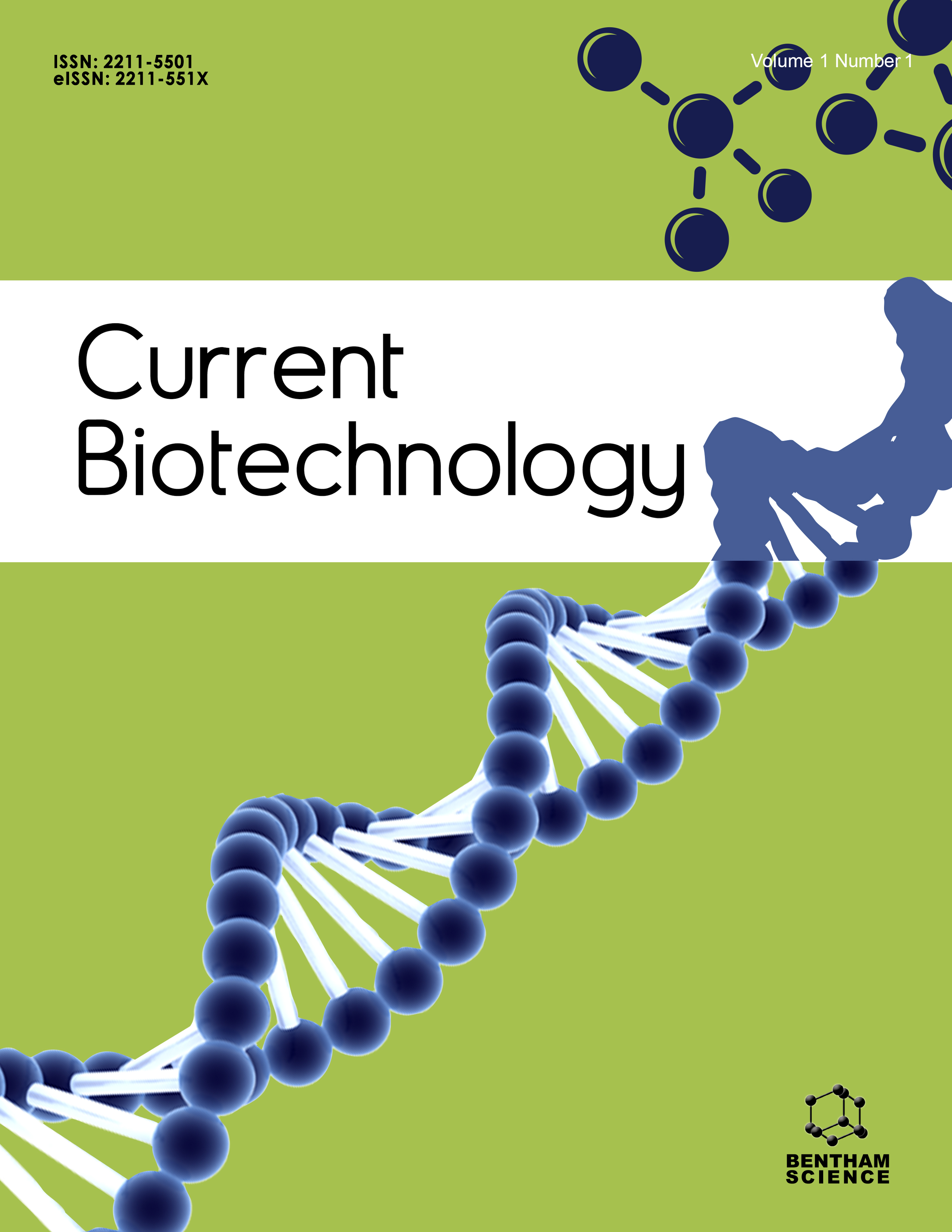- Home
- A-Z Publications
- Current Biotechnology
- Previous Issues
- Volume 1, Issue 2, 2012
Current Biotechnology - Volume 1, Issue 2, 2012
Volume 1, Issue 2, 2012
-
-
Endophytic Fungal Assemblages in Calophyllum and Garcinia spp. of Clusiaceae Family in Western Ghats, India
More LessA total of 596 fungal endophytes were isolated from ~2000 bark and twig samples of five medicinal plants from Clusiaceae family of Western Ghats, India, during three seasons viz., rainy, winter and summer. The isolated endophytes belonged to different fungal classes which were Ascomycetes (0.6%), Coelomycetes (19.3%), Hyphomycetes (52.1%), Zygomycetes (1.3%) and Sterile mycelia (0.7%). The most frequen Read More
-
-
-
An Overview of Olive Oil Biomolecules
More LessAuthors: Jihene Elloumi, Rayda Ben-Ayed and Sami AifaThe benefits of olive oil in nutrition were correlated with the prevention and therapy for many diseases. Many studies established an association with the low rate of heart disease deaths and the Mediterranean diet, especially the consumption of olive oil. Olive oil contains many bioactive molecules that could explain its multiple therapeutic effects. When isolated, olive oil biomolecules have shown their specific therapeutic Read More
-
-
-
Bacterial Mineralization and its Potential for Industrial Applications
More LessBacteria are capable of forming inorganic crystals either intracellularly or extracellularly. Calcite (calcium carbonate) precipitation is a well-known example of extracellular bacterial biomineralization. Certain species of marine moderately halophilic bacteria have been shown to precipitate minerals in water supplemented with artificial marine salt media and differing Mg2+:Ca2+ concentration ratios. Formation of fluorescen Read More
-
-
-
Current Trends and Developments of Aspartase
More LessAuthors: Ram Sarup Singh and Mukesh YadavAspartase catalyzes the reversible deamination of aspartic acid to produce fumarate and ammonia and in specific conditions, produce aspartic acid from the products of deamination reaction. Since aspartase is one of the most specific enzymes, an improved process has been developed using aspartase for the production of aspartic acid in 1960. Aspartase is typically a bacterial enzyme and most of the studies on its enzymatic, Read More
-
-
-
Galactokinases: Potential Biotechnological Applications as Biocatalysts
More LessAuthors: Helena Kristiansson and David J. TimsonGalactokinase, a member of the GHMP (galactokinase, homoserine kinase, mevalonate kinase, phosphomevalonate kinase) family of kinases, catalyses the ATP-dependent phosphorylation of galactose at position 1 on the sugar. This reaction is important in the Leloir pathway of galactose catabolism. The need to produce monosaccharides phosphorylated at position 1 for the synthesis of complex molecules, including amin Read More
-
-
-
Portable Technologies for Self-Monitoring of Coagulation Time: A Review
More LessAuthors: Lynda Metref and Philippe RenaudAnti-coagulation treatments are required for medical conditions that become more and more frequent with the ageing of the population in developed countries (atrial fibrillation, deep-venous thrombosis, heart prosthetic valves, etc.). These treatments generally use coumarin derivative (vitamin-K antagonist), whose activity needs to be monitored in order to keep the patient in an appropriate therapeutic range. This mea Read More
-
-
-
Subtracting Gene Function by Gene Silencing and Disruption in Bacteria
More LessAuthors: Nobutaka Nakashima, Shan Goh and Tomohiro TamuraGene silencing using antisense RNA or RNA interference (RNAi) is now a popular method used in eukaryotes. However, RNAi mechanism is absent in bacteria, and hence, single-stranded antisense RNAs, DNAs or nucleic acid analogs are used. Gene silencing in bacteria are achieved by either one of the following two approaches: expressing antisense RNAs using expression plasmids or adding synthetic antisense agents into the cult Read More
-
-
-
Targeting BCR-ABL Oncoprotein for Leukemia Therapy: Current Biotechnology and Future Perspectives
More LessAuthors: Min Shen and Q. Ping DouThe chimeric oncoprotein BCR-ABL, resulting from Philadelphia (Ph) chromosome translocation, is crucial for the pathogenesis of chronic myelogenous leukemia (CML) as well as a subset of acute lymphoblastic leukemia (ALL). Due to the loss of regulatory motifs during the fusion process, BCR-ABL has constitutive tyrosine kinase activity that is critical for oncogenesis. This provides the rationale for developing drug Read More
-
Most Read This Month
Article
content/journals/cbiot
Journal
10
5
false
en


